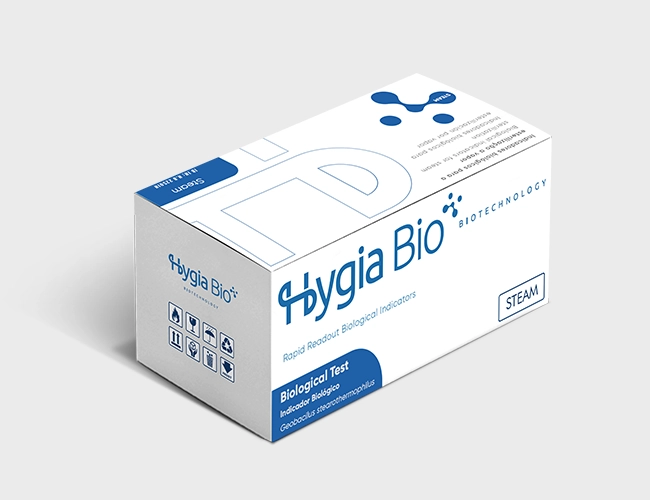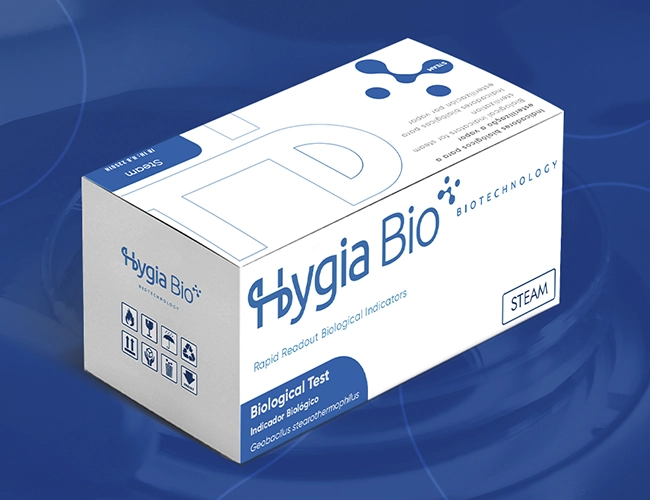Biological indicators are devices living beings utilized to evaluate the efficiency of the sterilization processes. They are specific microorganisms known by the resistance to sterilization methods, whether it is through heat, vapor, ethylene oxide, hydrogen peroxide or other sterilizing agent. The presence of viable microorganisms after the sterilization process shows a failure in the processes, while their death confirms the sterilization efficacy.
Biological indicators are considered gold-standard to validate sterilization processes, providing direct proof that the necessary conditions to the destruction of microorganisms were reached, ensuring this way of safety in the medical practice and in other environments that require sterilization.

Biological indicators by fluorescence for hydrogen peroxide: what are they and how do they work?
Hydrogen peroxide (H2O2) is an efficient and versatile sterilizing agent used in many environments, such as hospitals, industries and laboratories. The efficient monitoring of the sterilization process is crucial to ensure safety and efficacy of the method. The biological indicators contain spores of Geobacillus stearothermophilus, which are highly resistant to H2O2. If the sterilization process was effective, the spores will die.
During incubation, a fluorescent agent is added. If the spores are alive, an enzyme present on them metabolizes the agent, producing fluorescence. The presence of the fluorescence indicates failure in the sterilization.
Advantages of biological indicators by fluorescence for hydrogen peroxide:
- Fast results with 24 minutes responses
- High specificity and sensibility responses
- Easy to use and interpret

Biological indicators by pH to hydrogen peroxide
Alternatively, biological indicators by pH are a valuable tool to monitor the efficiency of the sterilization processes with hydrogen peroxide in a prolonged period. The HB 22P24H indicator of Hygia Bio, for example, is projected to offer a 24-hour results reading. These indicators work with pH’s alteration, which occurs when the microorganisms are effectively eliminated by the sterilizing agent.
Even though the reading processes are longer in comparison to the ones with fluorescence indicators, the pH indicators are fundamental to certain applications where long term verification is needed. They are especially useful in environments that do not require a fast turnover of the sterilized instruments, but even so need assurance that the sterilization processes were successfully completed.
This verification processes is more used in:
- Sterilization processes by H2O2 in low temperature: These processes are slower than the high temperature processes and the biological indicators by pH can be more adequate to monitor the sterilization efficacy.
- Environments with limited resources: Biological indicators by pH are a viable option to environments that cannot invest in more expensive and sophisticated biological indicators.
Hygia Bio, through the development of biological indicators by fluorescence and pH to hydrogen peroxide, reinforces the commitment with innovation and safety in hospital biosecurity. The choice between an indicator type and another depends on the specific needs of each medical institution and the adequate safety protocols.
Know our products
Hygia Bio is a brazilian company specialized in biosecurity solutions. The biological indicators by fluorescence and pH of Hygia Bio are a trustworthy and high quality option of sterilization monitoring. They are recommended for hospitals, laboratories and other essential medical applications. Our indicators can be read by the market’s main readers.
Know more about biological indicators by fluorescence and by pH
Understand the difference between biological indicators by fluorescence and pH for ethylene oxide








